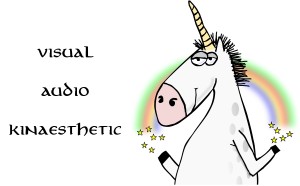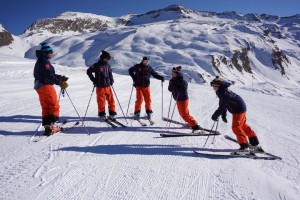Visual/Audio/Kinaesthetic (VAK) gets banded around loads, even at the top levels of Ski Teaching. I’ve often kept quiet, not to rock the boat, as somebody talks ‘knowledgeably’ about it. A paper from 2008: click here illustrates the dearth of worthwhile experiments that have been carried out in this area of psychology, and references papers that have contradicted this learning theory all together.
Please stay open minded reading the paper and this blog. Remember that opinions are great, but science doesn’t really care about your opinion or anecdotes, unless they involve double blind randomised testing with high numbers of trials/participants 🙂
The Pashler et al. paper states that the VAK thing has gained much influence in the world of education, and I’ve seen that it definitely exists in the realm of ski instruction. The paper finds that both children and adults do have learning preferences, but these usually don’t match up to their most effective method of learning a particular subject. Also, of the huge amount of academic literature on the subject of learning styles, very few experiments were capable of testing the VAK hypothesis with validity and those that did contradict it.
You may be thinking “a lack of evidence doesn’t disprove the hypothesis”, but disproving things is tough and sometimes impossible. For instance; we have a lack of evidence for unicorns being able to ski, as we’ve not witnessed it… it’s not disproved. But white-horned-horses carving turns, is as unlikely as Echinacea preventing bruising. Ice prevents bruising, you can test it (punch yourself in both eyes, and apply echinacea to one and ice to the other – monitor results). Why don’t all ski teachers try where possible to use evidence to improve the performance and enjoyment of their clients?
Well, we do (and not to the detriment of fun, enjoyment and happiness). Time would be wasted trying to figure out if my clients have Visual, Audio of Kinaesthetic preferences; if they do, they’re probably wrong, or I’m wrong in assessing it, and it more than likely has no relation on how they’re going to learn best anyway! Crazy eh.
Do we teach using VAK analogies, descriptions and explanations. Yes. It’s a diverse and interesting way to mix up a lesson. Those who’ve been in my coaching sessions may have heard me describe momentum/kinetic energy transferral causing snow displacement thus creating sound waves that we can hear! Everyone can understand my squiggles in the snow, followed by the sound of the turn, and the feeling of the ski under their foot. Boom, there’s VAK all in a one-er. Maybe it is more valuable to utilise a teaching method according to the clients weakest/least preffered aspect of VAK learning. Who knows?
It is definitely far more appropriate to to use a visual lesson when describing how to take a high line in the gates. By drawing lines in the snow, or getting people to watch an example. Whereas it’s more important to be auditory in explaining that someone can’t get their foot in the binding because the heel piece is in an upward position. Attempting to get one’s weight centred across the sole of one’s foot is impossible to listen for!
It may take a while for ski instructing examining bodies to get on board with not talking about this, so if you have an assessment coming up, be nice to the trainer and point them in the direction of http://scholar.google.com Because telling people that their theory is debunked doesn’t always go down well. Trust me.
Terry – these are my own words and not necessarily the views of the development centre as such… though the team whole-heartedly agree with my adoption of evidence based practise, where possible, in teaching skiing.


